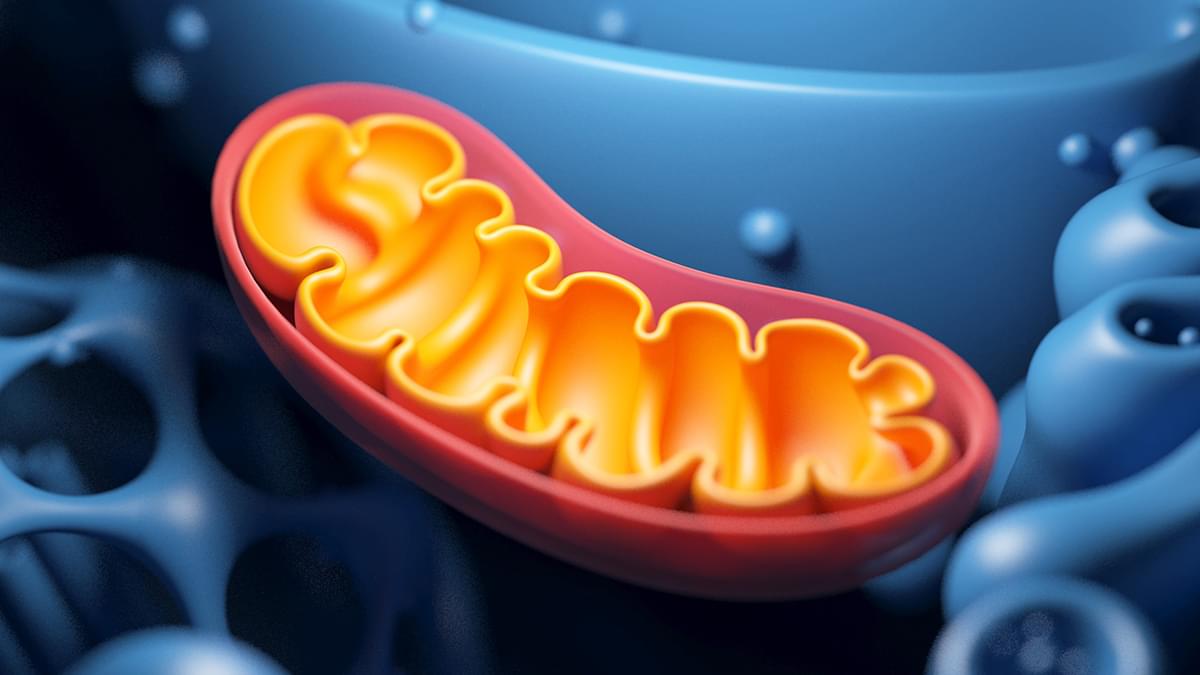New work explores why consciousness evolved and what observing birds can teach us about its biological purpose.



Tiny biological batteries known as mitochondria keep the body’s cells running smoothly, and their gradual decline is linked to a wide range of age-related diseases. Now scientists think they have found a way to keep mitochondria powered for longer.
A protein called COX7RP is key to this discovery from researchers at the Saitama Medical University and Chiba University in Japan. The protein is thought to help mitochondria form supercomplexes, structures that improve energy efficiency.
In the new study, male mice engineered to produce extra COX7RP showed a host of differences compared with controls, including a 6.6 percent increase in average lifespan and indicators of an extended healthspan – being able to live healthier for longer.

A molecular switch has the ability to turn on a substance in animals that repairs neurological damage in disorders such as multiple sclerosis (MS), Mayo Clinic researchers discovered. The early research in animal models could advance an already approved Food and Drug Administration therapy and also could lead to new strategies for treating diseases of the central nervous system.
Research by Isobel Scarisbrick, Ph.D., published in the Journal of Neuroscience finds that by genetically switching off a receptor activated by blood proteins, named Protease Activated Receptor 1 (PAR1), the body switches on regeneration of myelin, a fatty substance that coats and protects nerves.
“Myelin regeneration holds tremendous potential to improve function. We showed when we block the PAR1 receptor, neurological healing is much better and happens more quickly. In many cases, the nervous system does have a good capacity for innate repair,” says Dr. Scarisbrick, principal investigator and senior author. “This sets the stage for development of new clinically relevant myelin regeneration strategies.”

You’ve probably grown up accepting that your thoughts, feelings, and inner awareness all emerge from the firing of neurons in your brain. It’s what science has taught us for decades. Your consciousness is simply what happens when billions of brain cells communicate. Simple enough, right?
What if you’ve been looking at this backwards the whole time? What if the entire universe has been trying to tell you something fundamentally different about the nature of reality itself?
A materials science professor from Uppsala University recently published a framework that proposes an entirely new theory of the origin of the universe. Here’s where things get interesting. This framework presents consciousness not as a byproduct of brain activity, but as a fundamental field underlying everything we experience, including matter, space, time, and life itself.


Jim Al-Khalili explores emerging technologies powering the future of quantum, and looks at how we got here.
This Discourse was recorded at the Ri on 7 November 2025, in partnership with the Institute of Physics.
Watch the Q&A session for this talk here (exclusively for our Science Supporter members):
Join this channel as a member to get access to perks:
/ @theroyalinstitution.
Physicist and renowned broadcaster Jim Al-Khalili takes a look back at a century of quantum mechanics, the strangest yet most successful theory in all of science, and how it has shaped our world. He also looks forward to the exciting new world of Quantum 2.0 and how a deeper understanding of such counterintuitive concepts as quantum superposition and quantum entanglement is leading to the development of entirely new technologies, from quantum computers and quantum sensors to quantum cryptography and the quantum internet.
The United Nations has proclaimed 2025 as the International Year of Quantum Science and Technology, to celebrate the centenary of quantum mechanics and the revolutionary work of the likes of Werner Heisenberg and Erwin Schrödinger. Together with the Institute of Physics, join us to celebrate the culmination of the International Year of Quantum at the penultimate Discourse of our Discover200 year.
-

The Math Inc. team is excited to introduce Gauss, a first-of-its-kind autoformalization agent for assisting human expert mathematicians at formal verification. Using Gauss, we have completed a challenge set by Fields Medallist Terence Tao and Alex Kontorovich in January 2024 to formalize the strong Prime Number Theorem (PNT) in Lean (GitHub).
The translation of human mathematics into verifiable machine code has long been a grand challenge. However, the cost of doing so is prohibitive, requiring scarce human expertise. In particular, after 18 months, Tao and Kontorovich recently announced intermediate progress in July 2025 toward their goal, obstructed by core difficulties in the field of complex analysis.
In light of such difficulties, we are pleased to announce that with Gauss, we have completed the project after three weeks of effort. Gauss can work autonomously for hours, dramatically compressing the labor previously reserved for top formalization experts. Along the way, Gauss formalized the key missing results in complex analysis, which opens up future initiatives previously considered unapproachable.

A new study from the University of Miami Rosenstiel School of Marine, Atmospheric, and Earth Science and the Marine Megafauna Foundation finds that young Caribbean manta rays (Mobula yarae) often swim with groups of other fish, creating small, moving ecosystems that support a variety of marine species.
The paper is published in the journal Marine Biology.
South Florida —particularly Palm Beach County—serves as a nursery for juvenile manta rays. For nearly a decade, the Marine Megafauna Foundation has been studying these rays and documenting the challenges they face from human activities near the coast, such as boat strikes and entanglement in fishing gear, which can pose significant threats to juvenile mantas.
But the report was also marked by the flaws of its technocratic conception. Crucially, the broader stakes of the global energy transition went ignored. This is a mistake in urgent need of correction. The decarbonization agenda is not simply about reordering markets or industrial policies, but in fact represents the crucible for a new geopolitical order.
Four years ago, the International Energy Agency (IEA) published a landmark report, “Net Zero by 2050: A Roadmap for the Global Energy Sector,” that proposed a technical blueprint for a global green energy transition by the middle of this century. The report focused on the economic and technological dimensions of this energy transition. It was an admirable effort that calls for careful study.